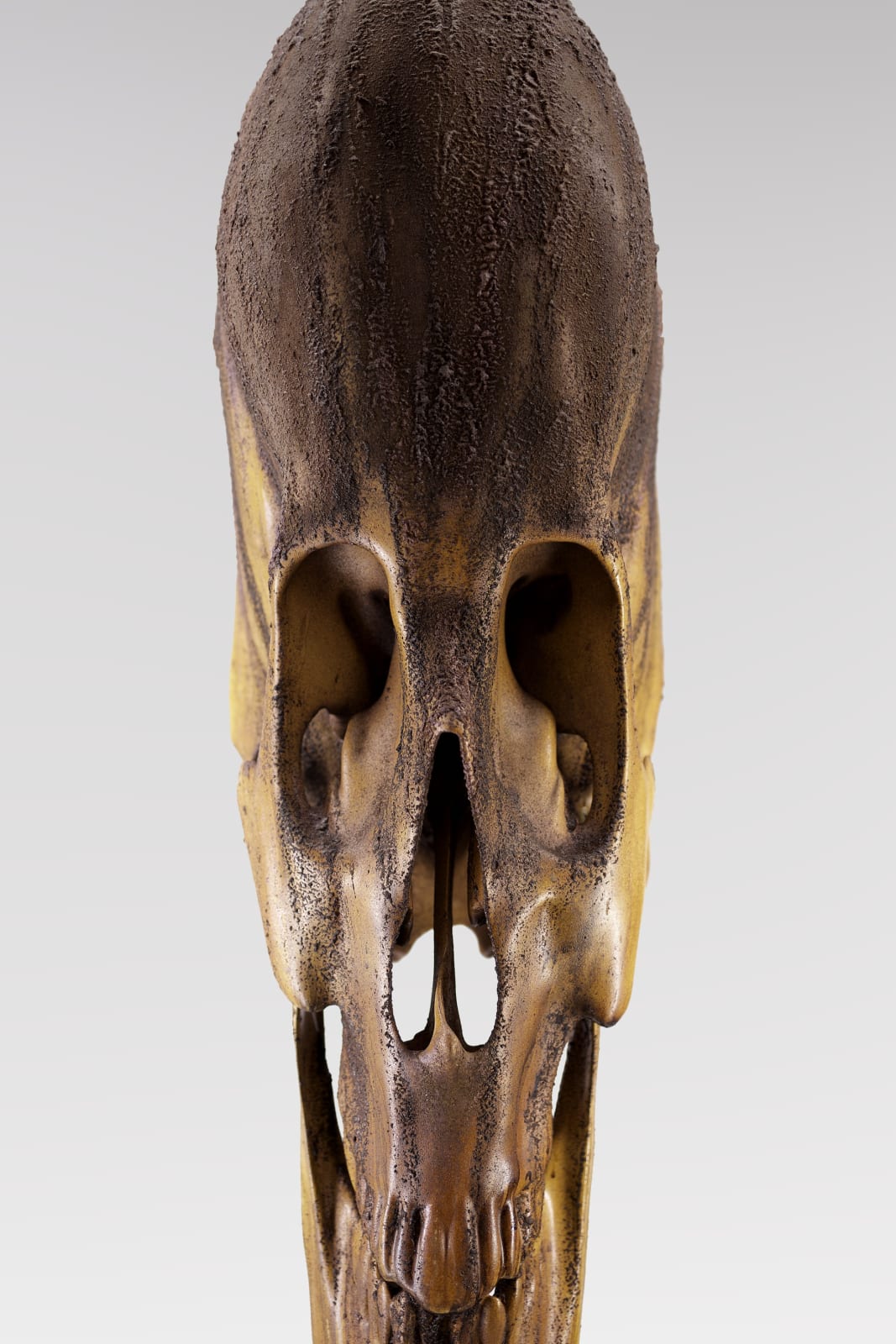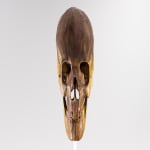Javier Murcia Spain, 1975
Eidos:
/ˈʌɪdɒs/
The distinctive expression of the cognitive or intellectual character of a culture or social group. Following on from the sell-out success of the Oxidations series Murcia made some key observations. His collectors gravitated to the visual experience of a beautifully sculpted object, the physical form instead of the conceptual aspects of the skull. For Murcia, the interest in the human skull lay not only in its form but in its iconic status, the hierarchical positioning within anatomy and its cultural position throughout history. Murcia states, "the skull is the logic, the structure, anchored, steady and enduring". The patinas' extensive exploration and visual success lead Murcia to challenge himself to explore the form. Distorting and scaling up created a discomforting experience of the appearance of the skull. The final pieces command presence and require distance from which to be viewed. From this distance, the viewer is lead to contemplate questions of the mind and its part in forming identity, ideas, ideals, culture, religion, technology, and all that we experience. Eidos reminds us that we can create worlds just by thinking.
Eidos Futurum 1-4:
Futurum is where Culture and Nature look to the world past and present. Murcia, in this series, muses on where we are heading - for him, the answer is a simple one, it is the circle of life, back to the earth. Each skull is an expression of metal in its purest state, be it a coating or, as with Futurum 3, precisely 16,000 nails. Oxidisation illustrates the changes that happen to the surface and ultimately to us all once we return to the earth.




